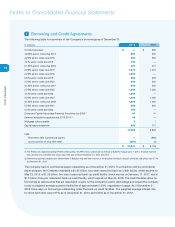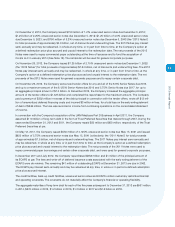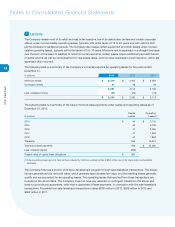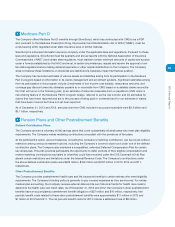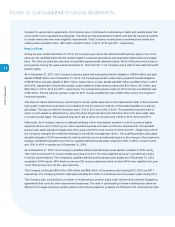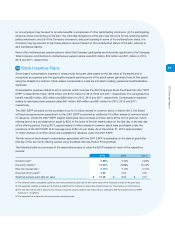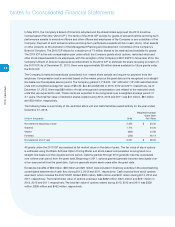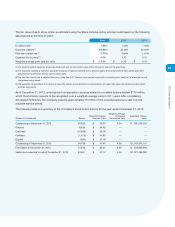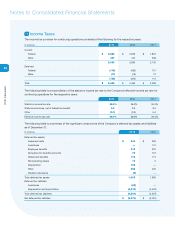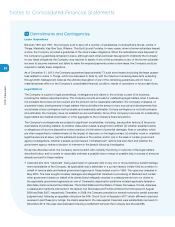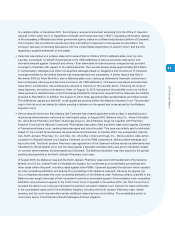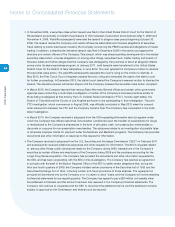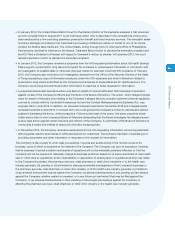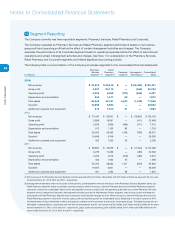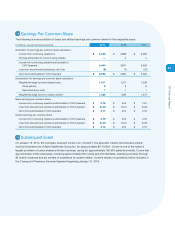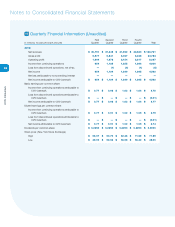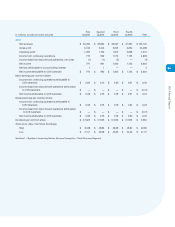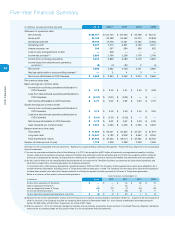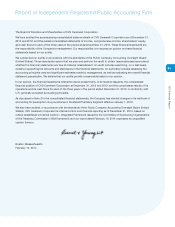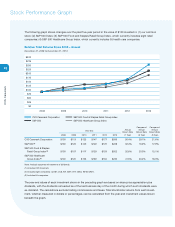CVS 2013 Annual Report Download - page 84
Download and view the complete annual report
Please find page 84 of the 2013 CVS annual report below. You can navigate through the pages in the report by either clicking on the pages listed below, or by using the keyword search tool below to find specific information within the annual report.
82
CVS Caremark
Notes to Consolidated Financial Statements
12 Commitments and Contingencies
Lease Guarantees
Between 1991 and 1997, the Company sold or spun off a number of subsidiaries, including Bob’s Stores, Linens ‘n
Things, Marshalls, Kay-Bee Toys, Wilsons, This End Up and Footstar. In many cases, when a former subsidiary leased
a store, the Company provided a guarantee of the store’s lease obligations. When the subsidiaries were disposed of,
the Company’s guarantees remained in place, although each initial purchaser has agreed to indemnify the Company
for any lease obligations the Company was required to satisfy. If any of the purchasers or any of the former subsidiar-
ies were to become insolvent and failed to make the required payments under a store lease, the Company could be
required to satisfy these obligations.
As of December 31, 2013, the Company guaranteed approximately 73 such store leases (excluding the lease guaran-
tees related to Linens ‘n Things, which are discussed in Note 3), with the maximum remaining lease term extending
through 2026. Management believes the ultimate disposition of any of the remaining guarantees will not have a
material adverse effect on the Company’s consolidated financial condition, results of operations or future cash flows.
Legal Matters
The Company is a party to legal proceedings, investigations and claims in the ordinary course of its business,
including the matters described below. The Company records accruals for outstanding legal matters when it believes
it is probable that a loss will be incurred and the amount can be reasonably estimated. The Company evaluates, on
a quarterly basis, developments in legal matters that could affect the amount of any accrual and developments that
would make a loss contingency both probable and reasonably estimable. If a loss contingency is not both probable
and estimable, the Company does not establish an accrued liability. None of the Company’s accruals for outstanding
legal matters are material individually or in the aggregate to the Company’s financial position.
The Company’s contingencies are subject to significant uncertainties, including, among other factors: (i) the proce-
dural status of pending matters; (ii) whether class action status is sought and certified; (iii) whether asserted claims
or allegations will survive dispositive motion practice; (iv) the extent of potential damages, fines or penalties, which
are often unspecified or indeterminate; (v) the impact of discovery on the legal process; (vi) whether novel or unsettled
legal theories are at issue; (vii) the settlement posture of the parties, and/or (viii) in the case of certain government
agency investigations, whether a sealed
qui tam
lawsuit (“whistleblower” action) has been filed and whether the
government agency makes a decision to intervene in the lawsuit following investigation.
Except as otherwise noted, the Company cannot predict with certainty the timing or outcome of the legal matters
described below, and is unable to reasonably estimate a possible loss or range of possible loss in excess of amounts
already accrued for these matters.
• Caremark (the term “Caremark” being used herein to generally refer to any one or more pharmacy benefit manage-
ment subsidiaries of the Company, as applicable) was a defendant in a
qui tam
lawsuit initially filed by a relator on
behalf of various state and federal government agencies in Texas federal court in 1999. The case was unsealed in
May 2005. The case sought monetary damages and alleged that Caremark’s processing of Medicaid and certain
other government claims on behalf of its clients (which allegedly resulted in underpayments from our clients to
the applicable government agencies) on one of Caremark’s adjudication platforms violated applicable federal or
state false claims acts and fraud statutes. The United States and the States of Texas, Tennessee, Florida, Arkansas,
Louisiana and California intervened in the lawsuit, but Tennessee and Florida withdrew from the lawsuit in August
2006 and May 2007, respectively. Thereafter, in 2008, the Company prevailed on several motions for partial summary
judgment and, following an appellate ruling from the Fifth Circuit Court of Appeals in 2011 which affirmed in part and
reversed in part these prior rulings, the claims asserted in the case against Caremark were substantially narrowed. In
December 2013, this case was dismissed following a settlement between the Company and the plaintiffs.


